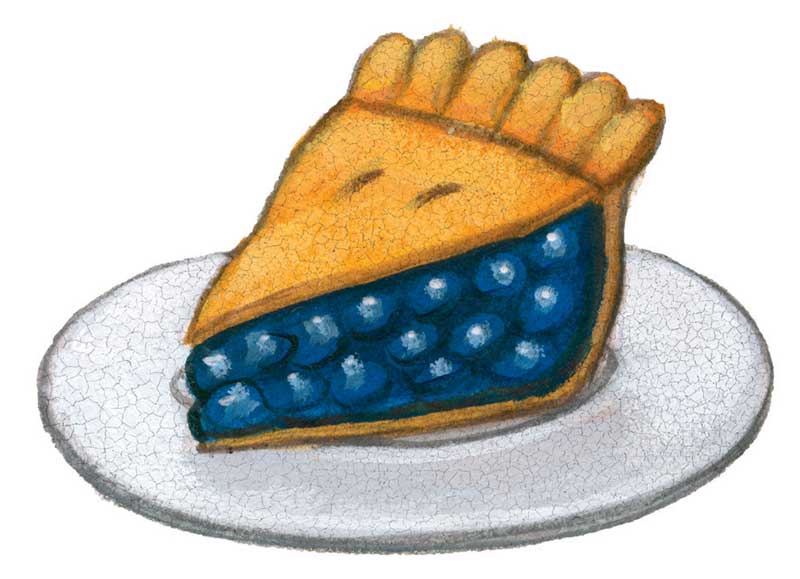J. D. Salinger’s Last Supper
On any given Saturday night, just about anywhere in New England, volunteers put on a supper in a church hall or basement. It’s a fundraising ritual almost as old as the country, started by women’s auxiliary groups during the years after the Revolution, as towns and states gradually abandoned the practice of using levies to […]

On any given Saturday night, just about anywhere in New England, volunteers put on a supper in a church hall or basement. It’s a fundraising ritual almost as old as the country, started by women’s auxiliary groups during the years after the Revolution, as towns and states gradually abandoned the practice of using levies to pay the local minister. Church suppers vary in size and type from place to place: chowder suppers on Cape Cod, ham suppers in Vermont, bean suppers everywhere.
Many church suppers today are truly down-home events, with no-frills fare made from prepackaged convenience foods and spaghetti sauce from a jar. In some places, though, monthly or annual church suppers are the real deal, not only locally famous but also attracting loyalists from distant towns–anticipated and planned for and well attended year after year.
Here in the Upper Connecticut River Valley, for example, the Congregational Church’s annual “Wild Game Supper” in Bradford, Vermont, comes to mind. The out-of-town crowd at that hunting-season event grew so overwhelming–even at $25 a head–that the church recently set a serving limit of 900. The writer Calvin Trillin once called it “the Super Bowl of church suppers.”
But another supper in this area, the “Famous Roast Beef Suppers” of Hartland, Vermont, takes the cake, to my taste. People drive an hour and a half or more to make the pilgrimage, and not just once a year or once a month, but some for nine straight Saturdays starting in January–every year. These dinners take place in the basement of “the Brick Church” in Hartland, and no matter the weather. A bad snowstorm or driving sleet might keep servings down to 200 or 250; a good night will feed some 400 people.
Most of them come, as my 7-year-old son and I did for the first supper last January, for the food: slabs of roast beef, mashed potatoes, green beans, coleslaw, pickles, rolls, homemade pie for dessert. The menu and the recipes haven’t changed in decades. (The denomination is Congregational, but certain things are still sacred.)
The first hundred people are seated at 4:30 p.m.; the rest are admitted 10 at a time as the tables empty, till 7 p.m. or till the food’s gone, whichever comes first. Folks start lining up before 3 o’clock, though, backing up the basement stairwell and crowding down the hall all the way to the piano room, and then circling back up the hallway past the stairs and out the door into the weather.
Some come early to be social, some to make sure they get the full choice of available pies, others to ease their hunger. At $12 for all you can eat, the first hundred or so people in line tend to be “real Vermonters,” says Rev. Lucia Anne Jackson, pastor of the Brick Church, which has been putting on these suppers for the past 65 years. “For some folks, that might be their only meal of the day …” After that, families and church members start filing in. By 6:30, there’s often still a line waiting.
Technically, the meals are put on by the Men’s Fellowship of First Congregational Church of Hartland, but the sheer volume of the enterprise requires a small army of parishioners and other townspeople, mostly women. Larry Frazer, head of the Men’s Fellowship and a 25-year veteran of the suppers, helps organize three separate teams of volunteers, who sign up for blocks of three Saturdays each. In addition to 10 servers, three people clearing, and a dozen or so folks helping in the kitchen, some 25 to 30 people on each team volunteer to bake at least two pies apiece for each Saturday: That’s about 60 pies each supper, available until they run out.
On opening night last winter, when Virgil and I sat down at 5:30, the chocolate cherry and lemon meringue pies were already gone, but 16 other varieties remained, including apple raisin, pumpkin chiffon, and Judy Howland’s own customary to-die-for blackberry pie.
Teenagers and young kids served the meal family-style, with heaping platters of beef and big bowls of potatoes and green beans. The table was set with china and flatware, not paper and plastic. We found plenty of medium-rare meat to choose from, and both of us had seconds before moving on to pie.
Though I didn’t know it at the time, our seat at a table close to the pies put us in the same location favored for many years by J. D. Salinger. He regularly made the drive across the river and north a bit from his home in Cornish, New Hampshire. Typically, he’d arrive an hour and a half ahead of the first seating–often to be first in line, recalls Larry Frazer. He’d sit quietly, writing in a spiral-bound notebook. Most people around him were unaware of who he was; the volunteers working the supper treated him like any other guest and protected his privacy.
Last year, though, Salinger’s health had declined to the point where he couldn’t make it to the first of the season’s roast-beef suppers he loved so much, the night we were there; in fact, he would pass away just a few days later. His wife, Colleen, drove over to Hartland for him. The kitchen crew put a plate together to go, and she brought it home to Jerry.
Hartland’s “Famous Roast Beef Suppers” will take place over nine consecutive Saturdays in 2011, starting January 22. For more information: 802-436-2792; hartlandbrickchurch.org. For a selection of church supper recipes from our readers, go to: YankeeMagazine.com/more


